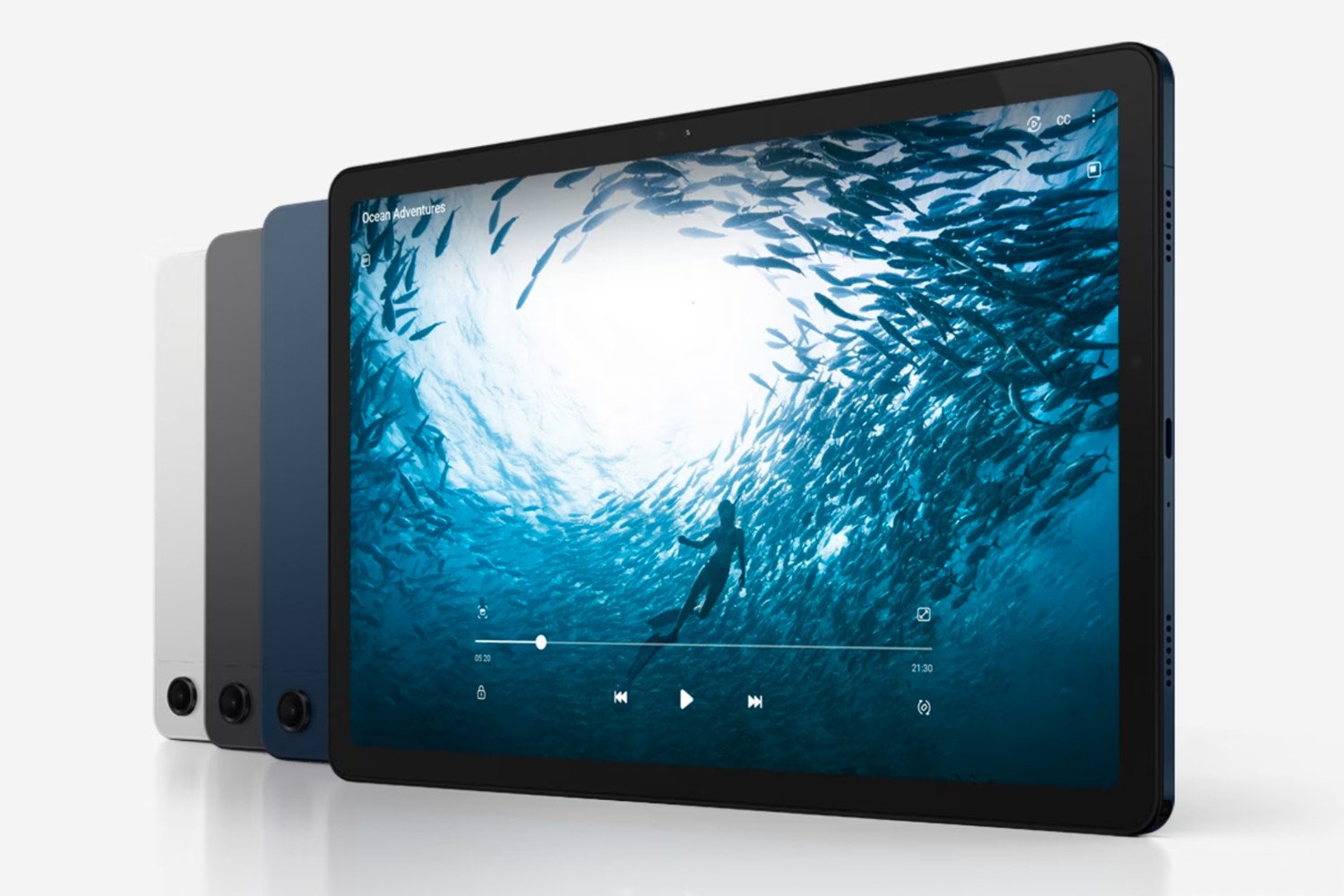Do you know Honor? This Chinese brand, founded in 2013, has established itself as a major player in the smartphone market. After a period under the wing of Huawei, Honor took off in 2020 and has had a string of successes ever since. We had the chance to visit its facilities in Shenzhen, China, to discover the manufacturing secrets of its smartphones. An immersion in a universe where innovation is king.
Promising beginnings to independence
Honor is not a brand like any other and its history is there to prove it. Unlike other recognized Chinese manufacturers like Huawei, Xiaomi, Oppo or OnePlus, Honor has not always been a brand in its own right. Initially, Honor was an affordable smartphone line within Huawei and it quickly stood out.
Founded in 2013, the brand became independent in 2020 following American sanctions against the Chinese giant. This new start allowed Honor, which then represented more than a quarter of Huawei’s sales, to stand on its own two feet and assert its identity. Freed from the shadow of its parent company, Honor has regained an already known name, factories and many ambitions.
Liberated, delivered, Honor aims for the summits
Far from being satisfied with its initial success, Honor is increasing its notable announcements. The firm has unveiled the Magic6 Lite, a smartphone so durable it can be used as a hammer. A marketing argument above all, but sufficient to help raise awareness of this still outsider brand in France.
Honor has also distinguished itself with its folding smartphones, such as the Magic V3, the thinnest in the world at only 9.2 mm thick. A partnership with Studio Harcourt for an exclusive photo mode on the Honor 200 Pro demonstrates its desire to move upmarket. It will also be available on the future Magic7 Pro, a smartphone that we have already been able to handle.
Honor’s efforts are paying off and the brand regularly stands out among the research firms Counterpoint Research, Canalys or IDC. The first two highlighted the Chinese firm’s thunderous start to the year, a success which was confirmed in the second quarter in Western Europe. At the start of the 2024 school year, Honor still stood out for its progress in the book-format folding smartphone segment in Europe.
Shenzhen: at the heart of the Honor machine
It is in Shenzhen, the cradle of the Chinese technology industry, that Honor has set up its assembly factory and R&D center. A brand new complex where the brand welcomed us, not without a certain caution. It is strictly forbidden to take photos or notes! We therefore had to rely on our eyes and our memory to transcribe this experience to you. After the visit, Honor provided us with some images of the factories and labs. We can confirm that they are consistent with what we saw during our various visits.
The Shenzhen factory, inaugurated at the end of 2021 and which cost 1 billion yuan (around 130 million euros), is a model of automation. On the Magic6 Pro production line, a smartphone comes out every 28.5 seconds. Honor is capable of producing 2,400 units per day per line, with a success rate of 99%. Twenty production lines are available 6 days a week and automation reaches 85%, limiting human intervention to verification tasks.
Industrial secrecy and innovation
Folding smartphones, more demanding due to their format, may require more human intervention. The automation rate is therefore lower and production times are extended compared to a traditional model.
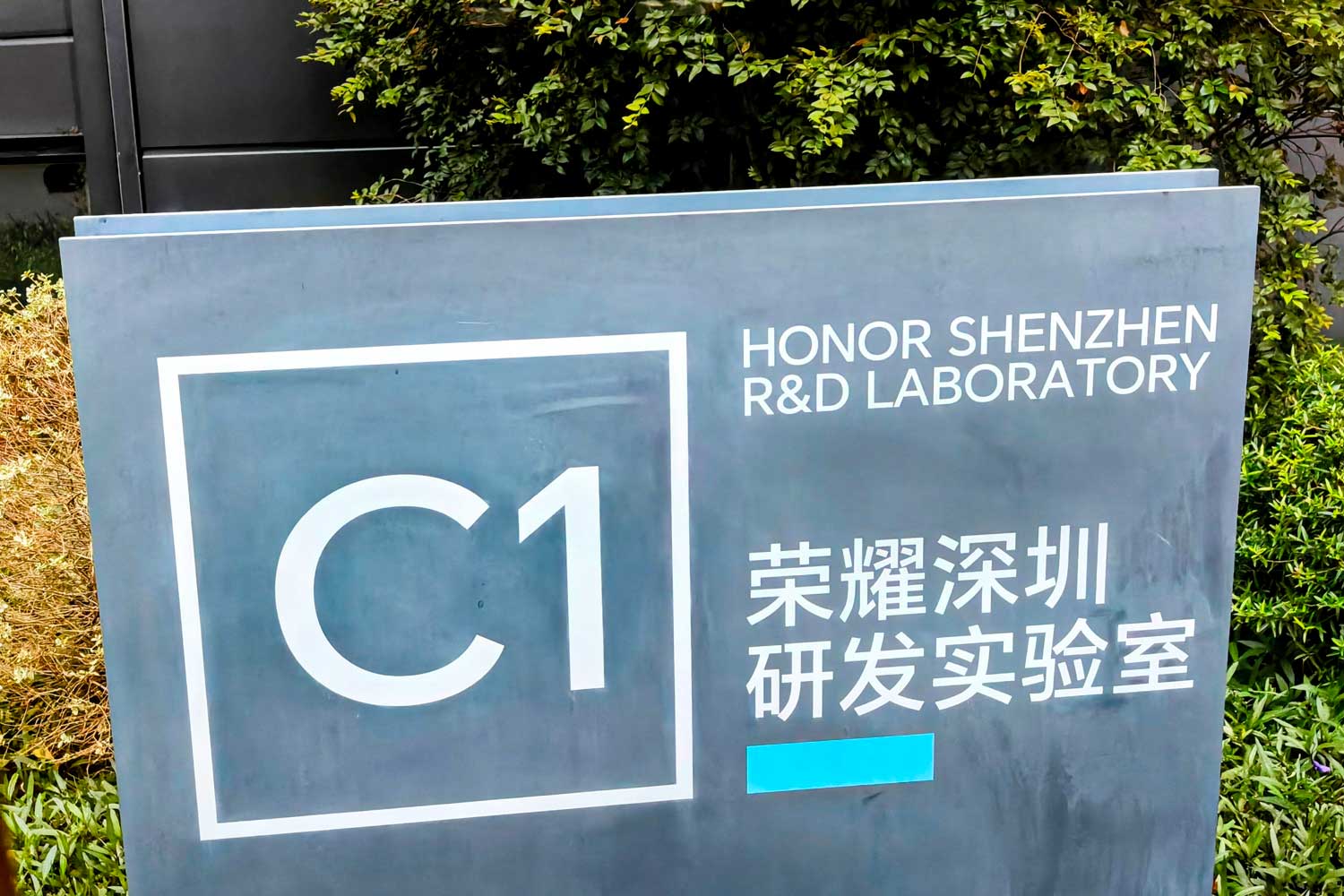
More than 70% of Honor’s 13,000 employees work in R&D. The brand has 7 research centers around the world, including one in France. In Shenzhen, the laboratories are responsible in particular for working on screens (comfort, visual fatigue, new technologies, certification, etc.), the resistance of smartphones (resistance to water, dust, etc.), hardware (new format, recharging speed, packaging, etc.), the network (signal, 5G, etc.) or even reliability (resistance of the button, to pressure, to extreme temperature conditions, etc.).
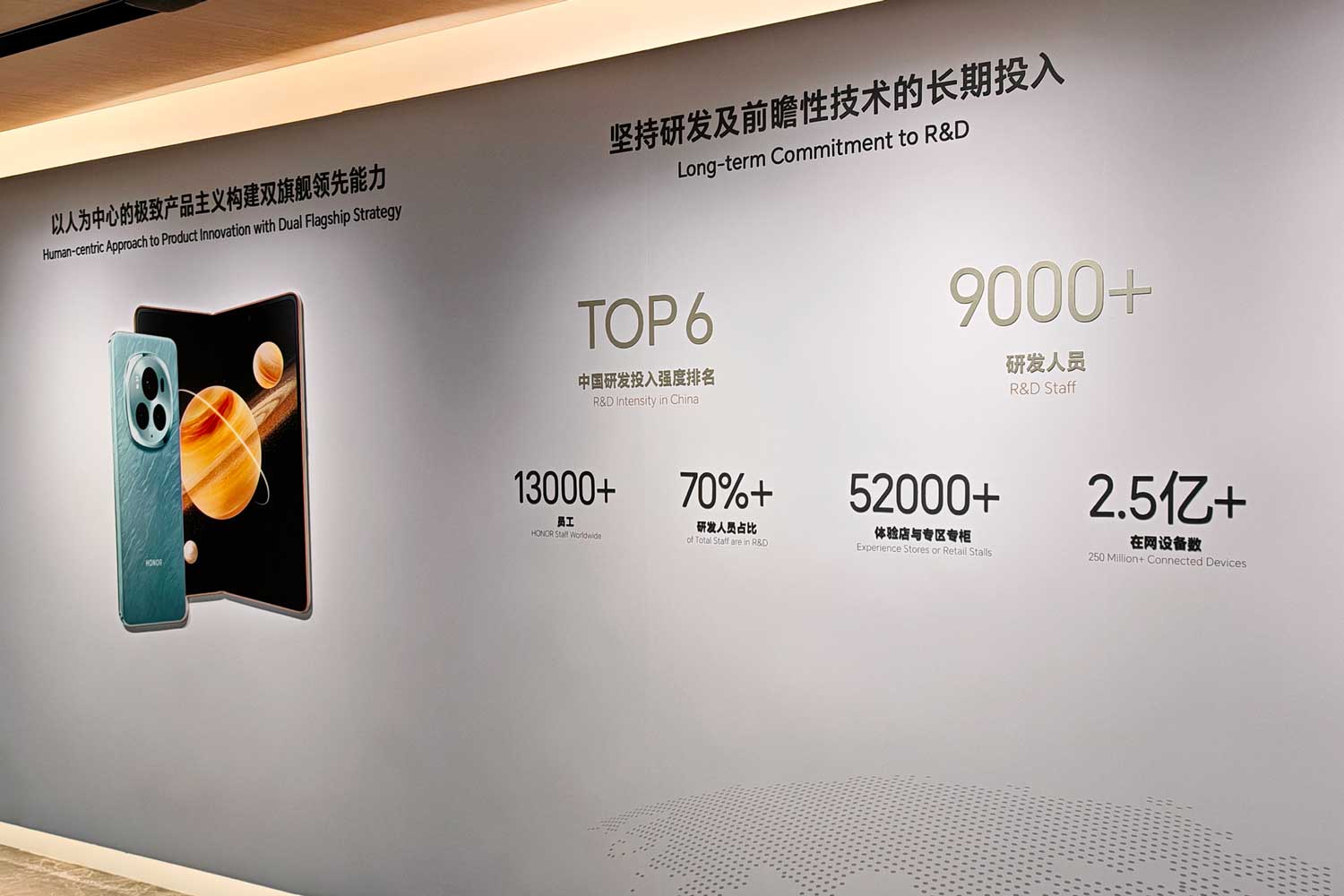
Honor also carries out drop resistance and folding tests for folding smartphones.
Innovation at the heart of the strategy
Another important element is studied in Honor’s laboratories: the battery. The firm was the first to offer new silicone-carbon battery technology with the Magic5 Pro, then on the Magic V2. This novelty is now gaining ground, offering higher density compared to a battery offering higher density compared to a conventional lithium-ion battery, which results in increased autonomy or reduced bulk for the same capacity.
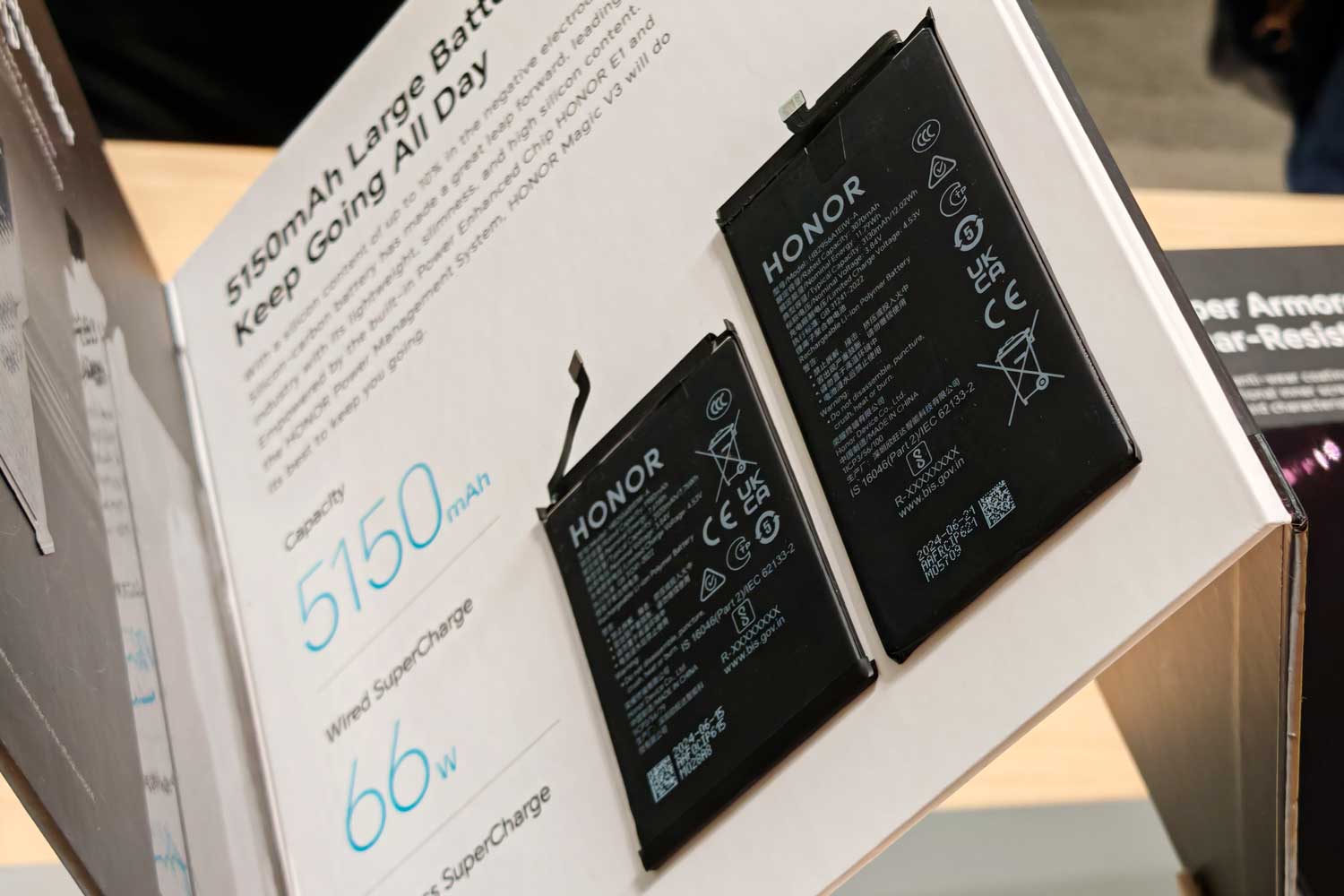
In its R&D center, Honor devotes no less than 6 departments to improving the batteries of its products:
- Material research labo : Materials Research Laboratory
- Advanced battery structure research lab : Battery Structures Research Laboratory
- Battery processing research lab : Research laboratory on battery manufacturing processes
- Battery modeling, algorithm and charge lab : Modeling, algorithms and battery charging laboratory
- Battery mechanical, thermal, electrical research lab : Research laboratory on the mechanical, thermal and electrical properties of batteries
- Battery failure analysis lab : Battery failure analysis laboratory
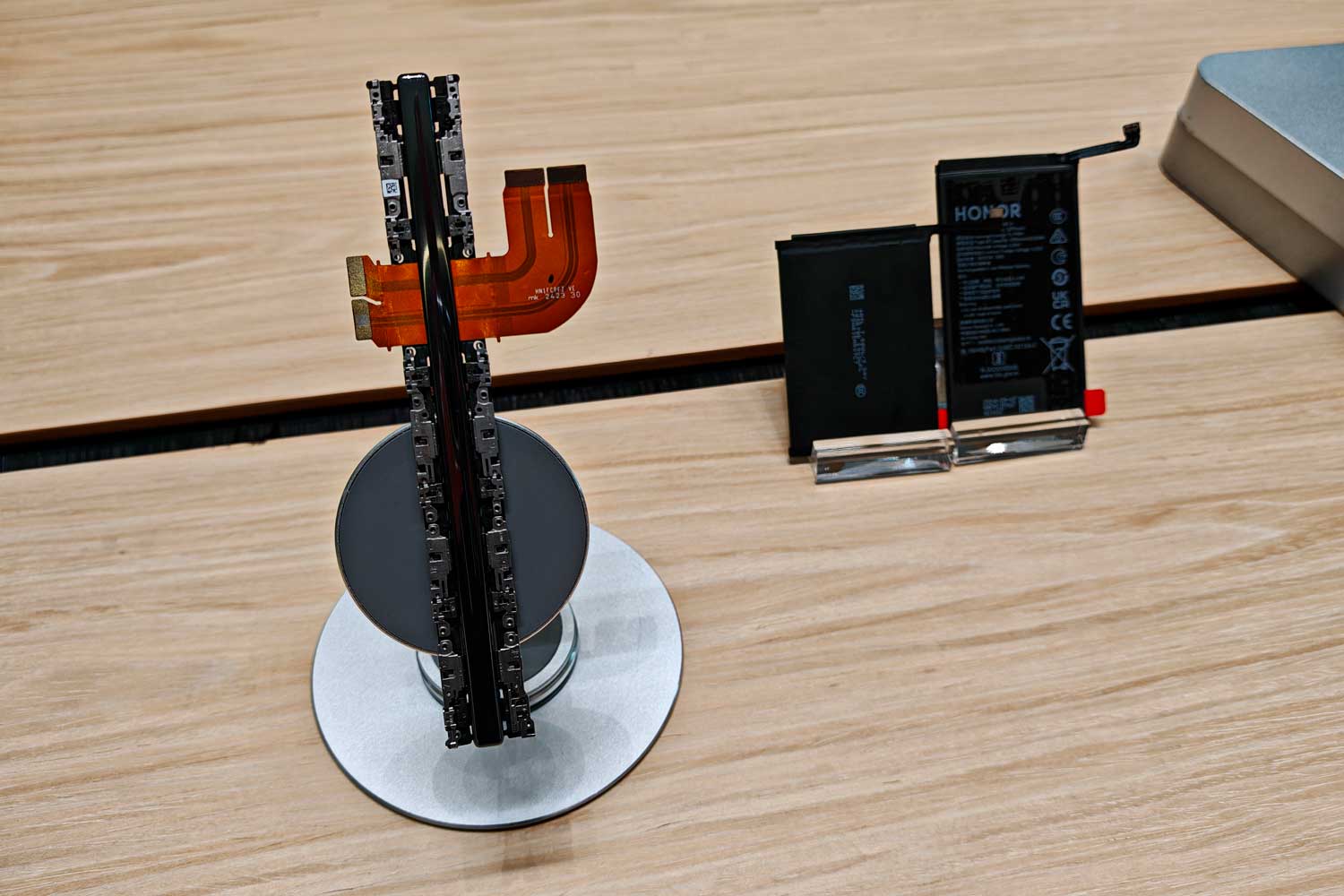
Advances already available on the latest models
For the user, these advances are now visible on the Magic V3. Despite its thinness (9.2 mm) and lightness (226 g), the folding smartphone has a third-generation 5,150 mAh silicon-carbon battery. A rather high capacity, associated with “SuperCharge” fast charging of 66 W and wireless charging of 50 W. This model also stands out by integrating one of the most advanced screens of the moment.
The Honor Magic7 Pro is also entitled to the third generation of silicon-carbon battery. It progresses compared to the current Magic6 Pro, benefiting from a latest generation battery of 5850 mAh compared to 5600 mAh for the current model. The Magic7 Pro adds 100W wired charging (up from 80W) and 80W wireless charging (up from 66W currently). Improvements which are made without increasing the weight of the device, the new Honor Magic7 Pro even being a little lighter than its predecessor (223 g compared to 225 g).
AI, the future of smartphones and Honor?
In addition to the hardware aspect, Honor is investing massively in artificial intelligence. If concrete applications still remain limited, the brand has announced the arrival of a real AI agent. The Yoyo Agent wants to be much more than just an assistant by learning and anticipating the user’s needs. Even if the competition is tough, the MagicOS 9 operating system lays the foundations for this revolution.
Having gone from being an affordable brand to a major player in innovation in the smartphone market in just a few years, Honor impresses with its massive investments in R&D and its desire to push the limits. Honor is an actor to follow closely now and in the years to come.
In Chengdu, we visited the Honor flagship store
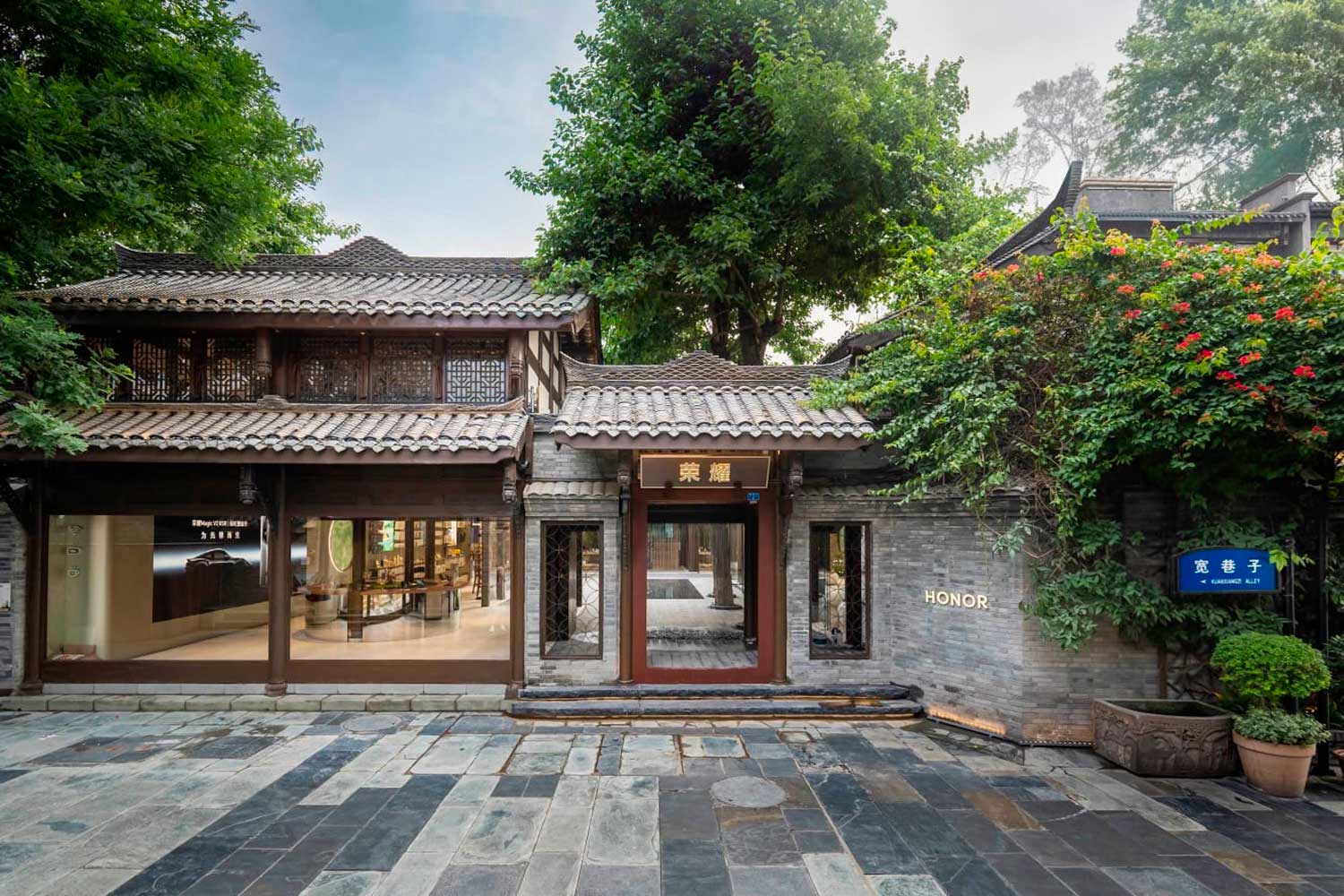
Honor recently opened its first flagship store in Chengdu, a Chinese city capital of Sichuan province. The particularity of this shop is that it is located in Kuanzhai alley, a set of three historic alleys. With a total area of 1000 m², the store is inspired by the city’s heritage and traditional architecture.
In addition to its products, Honor highlights works and artistic talents from its Honor Talents design competition. Upstairs, the boutique highlights its tie-up with Studio Harcourt to allow visitors to test the portrait experience.
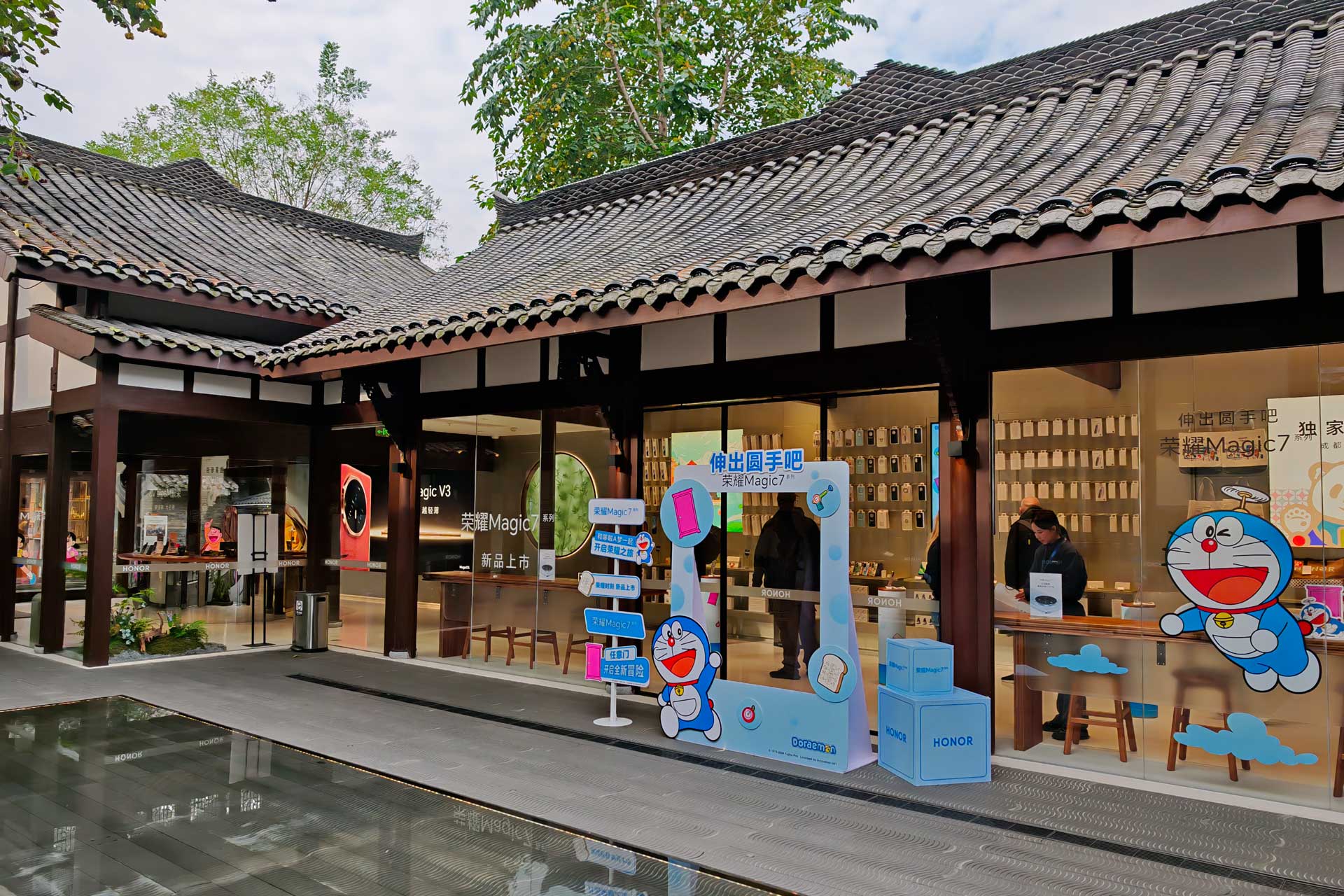
🟣 To not miss any news on the WorldOfSoftware, , .











/cdn.vox-cdn.com/uploads/chorus_asset/file/25263505/STK_414_AI_C.jpg)




